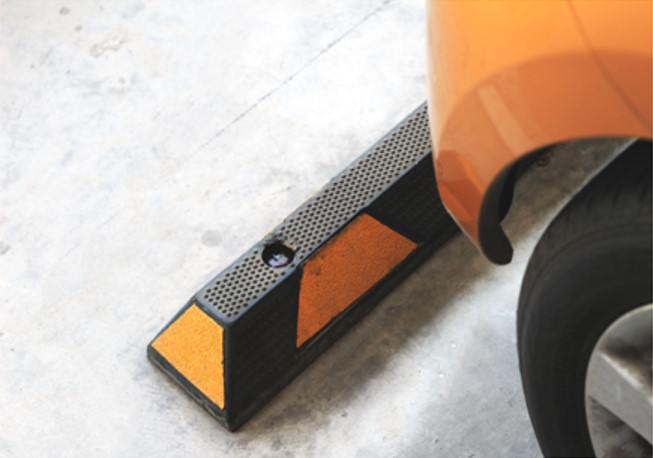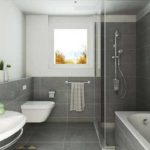Wheel stops are handy traffic management devices that are used to stop wheels at a boundary during parking. They act as a physical reminder to the driver that they are going too far, and they need to stop. This is a fantastic way to prevent drivers from driving through parking spaces and from mounting a pedestrian walkway. Both of these driving activities can result in serious injuries and property damage. In this article, we will show some things that you need to consider when you buy wheel stops for your site.
Understand Wheel Stop Features
Wheel stops have many features that make them attractive to property managers. Understanding these features is important to make sure that you get the wheels stops that you need.
Wheel stops typically have high visibility features to make them easier to see in low light conditions or at night.
They are resistant to heat and oil.
They are effective in a wide variety of weather conditions.
They are easy to install (not concrete).
Each wheel stops comes with a warranty.
They protect pedestrian walkways and cycle lanes.
The Different Types of Wheel Stops
Wheels stops are available in a variety of sizes, styles, and designs so it can be hard to make an informed purchasing decision. It’s easier to consider wheel stops by the materials that they are made form and narrow your search from there. Here are the four main types of wheels stops in use today.
- Rubber Wheel Stops
Rubber wheel stops are the most popular choice for a number of reasons. They are made from 100% recycled rubber that’s ground down into granules and then formed into wheel stops. During the manufacturing process, colours can be added, and these will not fade over time. They can also have reflective panels glued to them to create a high visibility wheel stop.
They are easy to lift by a single worker, and they can be installed on a surface using standard tools. Because they are made of rubber, they are more flexible than other wheel stop materials, and this means they can be easily fixed to uneven surfaces. Rubber wheel stops comply with Australian Standards AS 2890.1:2004 and they typically come with a two-year manufacturer’s warranty.
- Polyethylene Wheel Stops
These are plastic wheel stops that are well regarded for their strength and durability. They can be coloured during manufacturing, giving them a uniform and clean look in any parking location. Polyethylene will not chip, warp or crack in the heat and they are light enough to be installed by a single worker. They lack the flexibility of rubber, and they are a poor choice for areas with uneven surfaces. These wheel stops comply with Australian Standards AS 2890.1:2004 and they may have a longer manufacturer’s warranty available.
- Metal Wheel Stops
These types of wheel stops have fallen out of favour in recent years. They are not as flexible as rubber, making them harder to fix to an uneven surface. Metal wheel stops are an expensive option when compared to a polyethylene alternative making them less attractive.
- Concrete Wheel Stops
These were for a long time the only types of wheel stops available, but they are not typically used today. Concrete wheel stops are heavy; multiple workers need to move them into place, and it takes a long time to install one. The wheel stop has to cure, and this means that you cannot use it for a long time after the installation. Concrete is susceptible to chipping and cracking; rain can enter at these points and destroy the wheel stop if it freezes. Finally, concrete wheel stops are expensive compared to any of the other wheel stop types shown above.
Wheel Stop Installation Locations
When you think about wheel stops, it’s likely that car parks come to mind, but there are other locations where you could use a wheel stop to improve safety.
Uneven Surfaces: A wheel stop can be used to prevent vehicles from rolling down a slope.
At Home: A wheel stop installed at the end of a parking space or garage will help the driver to avoid a collision at home.
Protect Fence lines: If you need to prevent cars from parking on your fence line, install one or more wheel stops.
Shop Fronts: Customer parking is often located at the shop from with a pedestrian walkway between the car and the building. Installing wheel stops here will prevent the car from mounting the walkway and injuring pedestrians.
Tips for Buying Wheel Stops
When you’re ready to purchase your wheel stops, consider the following things first.
- Vary the Colours
The wheel stop that you choose should be available in different colours. This will allow you to use them in various parts of the parking facility to designate specific parking areas. For example, you could use blue wheel stops for disable parking, yellow wheel stops for standard parking, and red wheel stops for reserved parking spaces.
- Check the Fixings
Each type of wheel stop will require certain fixings to fix it firmly to the surface. The fixings that you need should be included with the wheel stop, but certain surface types may need specialised fixings. Most modern wheel stops can be fixed in place with standard tools, and full instructions should be included.
- Check the Wheel Stop Length
The length of the wheel stops that you choose should be determined by the vehicles that you’re expecting to park at your location. A normal length wheel stop will easily stop a car, but it will have no effect on a larger vehicle. It’s always possible to pair two wheel stops together to fill a certain gap, but it’s a better idea to choose a wheel stop of the correct length.
Final Thoughts
As you can see, wheel stops are useful in a wide variety of locations, and they are an ideal way to improve safety at your location. If you’re looking for high-quality wheel stops in Perth, contact Image Bollards for expert help and advice.
Related Posts












